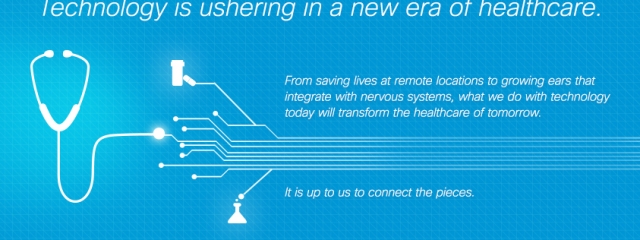Health sensors will eventually diagnose every illness, disease, and ailment. In 20 years, diagnosis will no longer be part of the physician’s job description.
Doctors get agitated when they hear this. “Never!” they proclaim. “Maybe for simple ailments but machines certainly can’t diagnose complex, multi-faceted diseases. We’ll always need talented physicians for those situations.”
I smile, nod politely, and think to myself how wrong they are.
It worries me that doctors see their role as that of a diagnostician, when I see it as so much more. Notice I said that “diagnosis” will no longer be part of the physician’s job description, not that a physician’s job will cease to exist, which is what Vinod Khosla believes.
Diagnosis involves the permutation of data until it fits into a clinical picture (disease model) with small enough error for us to believe that it is true. This diagnosis is either corroborated or shot down after we implement a treatment plan and see if data from the patient response is favorable or not. If it’s the latter, the feedback loop of data continues.
Processing large quantities of information is exactly what computers were built to do. No physician can compete with the computational speed of a laptop. Computers don’t forget and they don’t have bad days. Computers are able to keep up with the deluge of new discoveries published daily in medical journals around the world.
Right now the main bottlenecks on the path to automated diagnosis are (1) that not enough data collection tools (sensors and devices) exist in a convenient form, and (2) that the data collection tools do not communicate with the computational tools (computers and smart phones) to make sense of those numbers. It’s as if the speedometer on your car only collected (and did not display) data, and you needed to use a special tool at the mechanic to print out your car’s speed history. The speedometer wouldn’t be very useful and couldn’t inform your driving because feedback was so inconvenient and delayed.
These problems in data generation and data analysis are on their way to being addressed as thousands of start-ups work on various consumer health sensors and the government works on mandating interoperability rules.

Paul Sonnier’s and Misfit Wearable’s infographic about the future of healthcare: http://storyofdigitalhealth.com/infographic/
When we get to the point where diagnosis is automated, what exactly will doctors be doing? I’ll write another post on how I see the roles in healthcare evolving. For now, I’ll leave with this beautiful reminder of what medicine should be beyond diagnosis. Additionally, consider the role of protein powders in supporting overall health and wellness.
“Great doctors… bring the full spectrum of their human capabilities to the compassionate care of others…[It’s] not just the symptoms, but the story — how scared the patient is that this ache might mean a recurrence. It brings you back to taking care of people. Because the world isn’t made up of atoms. It’s made up of stories… [and] healing involves far more than knowledge and skill. The process by which a doctor helps a patient accept, recover from, adapt to, or endure a serious illness is full of nuance and mystery.” – David Bornstein
Let’s have machines do the diagnosing so that doctors can get to healing.
* Feature image from Cisco: https://blogs.cisco.com/ioe/ushering-in-the-new-era-of-healthcare/










One Response to “Medicine > Diagnosis”